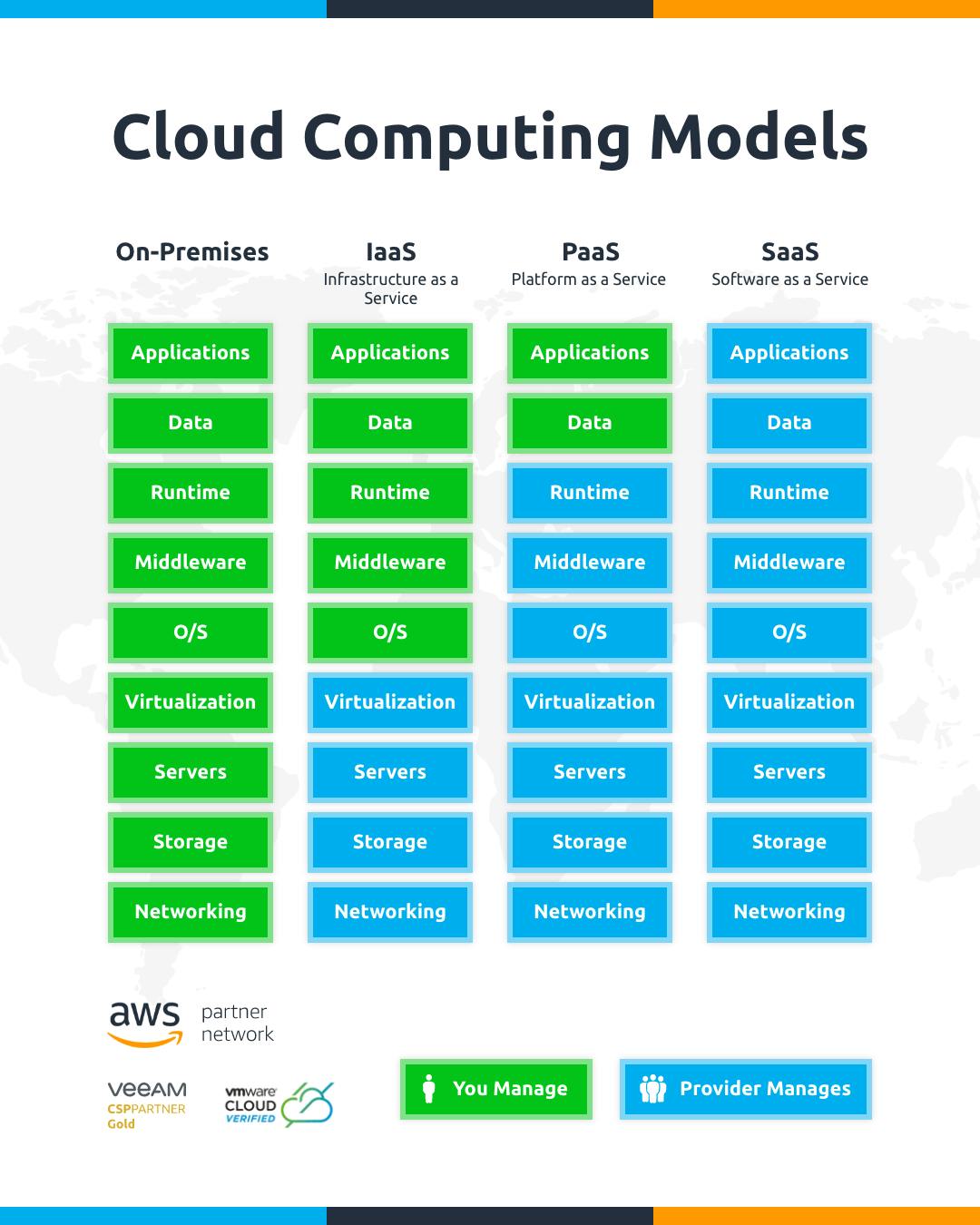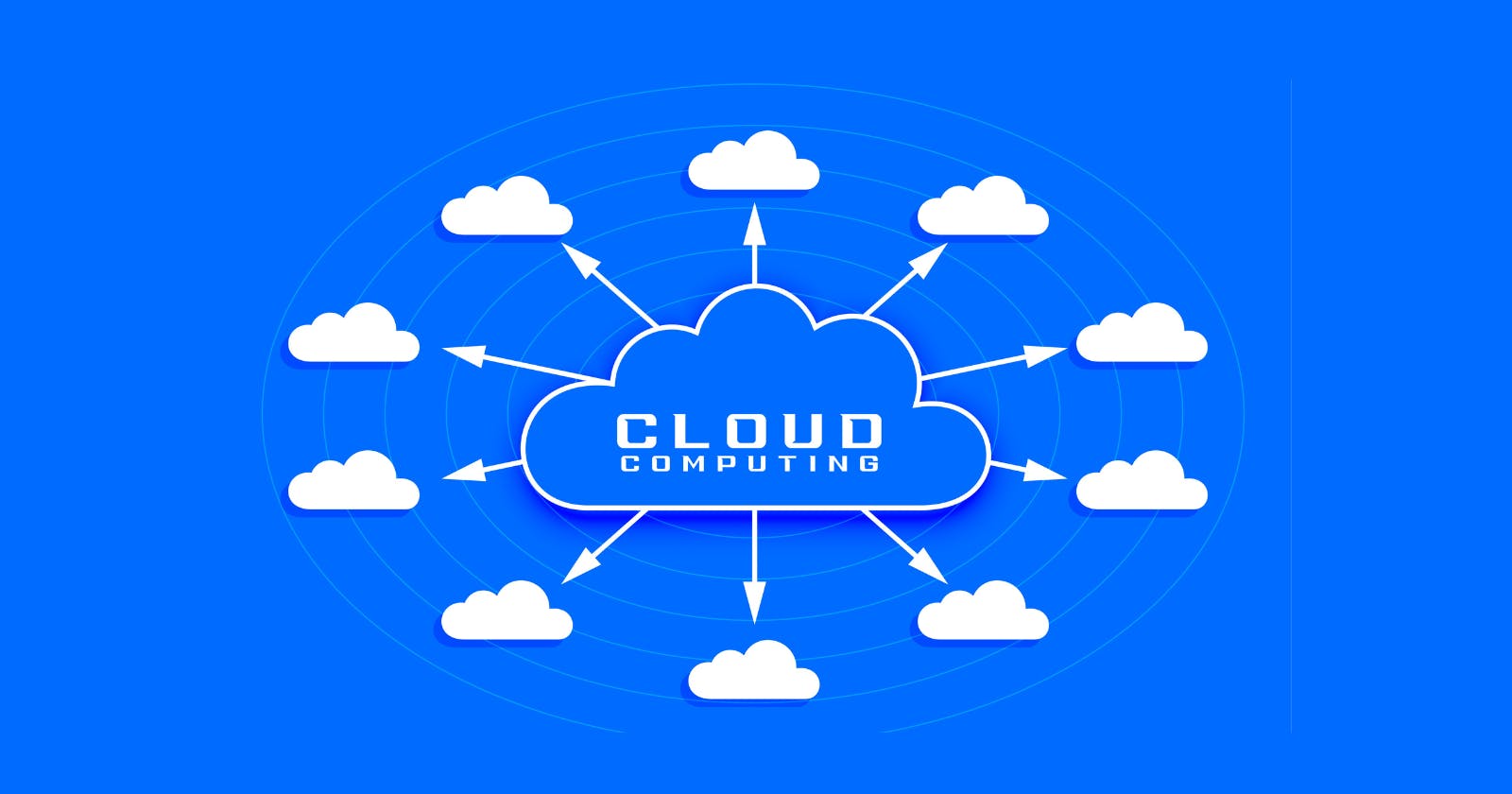Cloud computing has become an increasingly popular technology in recent years but, what exactly is cloud computing☁️?
In this article, you will learn about what cloud computing is, the benefits of cloud computing, the cloud deployment model and the types of cloud services.
Introduction
When you are in the comfort of your home and you need a light all you simply have to do is to turn on the light switch and you expect the light bulb to turn on. Of course, you know your home should have an electricity connection but the details of how electricity gets into the light bulb are not entirely important to you.

You don't necessarily have to think about how electricity is being generated in the power plant nor how it is travelling through a large network of high voltage transmission lines to your town going to a substation and eventually making its way to your home. Now just imagine if each house has to maintain its electric power plant and we all have to buy maintain and run our power plant infrastructure. That's a daunting experience, right?
Similarly in the IT ecosystem before the advent of cloud computing, each company would have its data center, with tons of servers and each server had a different purpose. Also, these servers may be running on different hardware. And even with different operating systems each new application that you installed would require that the application is running on a dedicated server. This experience wasn't pleasant, and it is too costly and difficult to manage as high-level IT expertise and knowledge are required. Cloud computing was introduced to solve the challenge posed by the traditional data center.
What is Cloud Computing
Cloud computing is a term used to describe the delivery of computing services—including servers, storage, databases, networking, software, analytics, and intelligence—over the Internet (the cloud). Companies offering these computing services are called cloud providers and typically charge for cloud computing services based on usage, similar to how you are billed for water or electricity at home.
In cloud computing, the word "cloud" is a metaphor used for the "internet". Therefore, the phrase "cloud computing" means a type of "internet-based computing".
Cloud computing is the delivery of computing resources as a service over the internet. Cloud computing is a model for delivering information technology services in which resources are accessed over the internet, rather than being hosted locally. It is a way of storing and accessing data and programs over the internet, rather than storing them on a local computer or server.
It has revolutionized the way businesses, developers, researchers, government, healthcare practitioners, and students access software and storage. With the cloud, users can access software applications, storage, and services on demand without having to invest in their own hardware or software.
Benefits of Cloud Computing
Cloud computing provides many benefits to organizations such as Scalability, Reliability, Cost savings, and Elasticity.
Scalability: Cloud computing allows organizations to quickly scale up their computing capabilities as needed (based on demand). This cloud computing benefit helps to reduce the need of purchasing additional hardware that becomes useless when there is a low demand for the infrastructure.
Reliability: Reliability is the ability of a system to recover from failures and continue to function. Cloud computing can improve the reliability of an organization's IT infrastructure since the cloud under its decentralized design naturally supports a reliable and resilient infrastructure. The cloud enables you to have resources deployed in regions around the world. With this global scale, even if one region has a catastrophic event other regions are still up and running.
Cost savings: cloud computing utilises a pay-as-you-go billing model, meaning that organizations only pay for the resources they use. Therefore, this benefit of cloud computing help organisations to save cost since there is no capital expenditure (CapEx) involved in setting up traditional data centres.
Elasticity: cloud computing provides increased flexibility, allowing organizations to quickly access the computing resources they need.
Cloud Deployment Models
A cloud deployment model defines where your data is stored and how your customers interact with it, that is, how they get to it and where the applications run. There are three (3) different types of cloud deployment models, these are. Public cloud, Private Cloud, and Hybrid Cloud.
Public cloud
The public cloud refers to cloud services (such as virtual machines, storage, or applications) of which the underlying infrastructures are owned and managed by the cloud provider and are used to provide services to a large number of users. All the infrastructures run on the cloud provider's hardware in a dedicated data centre. You simply use your browser and access service and share the same hardware storage and network devices with other users.
Some of the advantages of the public cloud are
No maintenance: in this case the cloud service provider provides the maintenance for all the infrastructures and you don't have to worry about it.
Availability of Nearly Unlimited Scalability: You have near unlimited scalability on-demand resources available to meet your business needs.
High reliability: a vast network of servers insure against failure.
However, security and control are threats to using the public cloud, when using the public cloud you have less control, you don't own the hardware or services and you cannot manage them as you may want to.
For example, if you want to deploy a web application or a blog site on hardware and resources that are owned by a cloud provider using a public cloud. This scenario allows cloud users to get their website or blog up quickly and then focus on maintaining the site without having to worry about purchasing or managing or maintaining the hardware.
Private clouds
Private clouds are used by a single organization for their own specific needs and are usually hosted on-premises or in a private data centre. In a private cloud, you are responsible for creating a cloud environment in your own data centre and providing self-service access to compute resources to users in your organization. This offers a simulation of a public cloud to your user but you remain completely responsible for the maintenance of the hardware and software services you provide.
The advantages of the private cloud approach include;
There is no legal obligation you can ensure the configuration can support any scenario or legal requirements.
You are in complete control you have control and responsibility over the security. However, the disadvantage of private cloud are;
The private cloud infrastructure is too expensive to set up compared to the public cloud as you must purchase the hardware for setup and also you're responsible for the maintenance of the equipment.
Limited agility to scale, the private cloud model poses a challenge in scalability and owning the equipment because you must buy, install and set up new hardware based on demand and your services requirements.
A private cloud requires I.T. skills and expertise that might be hard to come by. A use case for a private cloud would be when a company has data that cannot be stored in the public cloud due to ethical considerations.
One such instance for using private cloud could be where the government policy requires that specific data are kept in the country or privately in a private cloud to provide cloud functionality to external customers as well as to specific internal departments such as the accounting department.
Hybrid clouds
Hybrid clouds combine elements of public clouds and private clouds to create a more secure and cost-effective infrastructure. Automation and orchestration between the two hybrid clouds allow you to run your applications in the most appropriate location for example you could host a website in the public cloud and link it to a highly secure database hosted in your private cloud or in an on-premises data centre.
The advantage of a hybrid cloud is that you can use your equipment to meet security compliance or legal scenarios where you need to completely controlled environment and some concerns. This is useful when you have something that cannot be put in the cloud may be for legal reasons.
However, It can be more expensive than selecting one deployment model since it involves some upfront costs and it can be more complicated to set up and manage.
Types of Cloud Services
Cloud service models are types of delivery models for cloud computing services. These models determine how cloud services are provided to the customer and how they are accessed. There are three main types of cloud service models: Infrastructure as a Service (IaaS), Platform as a Service (PaaS), and Software as a Service (SaaS).
Infrastructure as a Service (IaaS)
Infrastructure as a Service (IaaS) is a model in which the cloud provider provides the infrastructure, such as servers, storage, and networking, to the customer. The customer is responsible for installing and maintaining the operating system, middleware, and applications. IaaS is a flexible model that allows customers to scale up or down their resources as needed, and pay only for what they use.
Platform as a Service (PaaS)
Platform as a Service (PaaS) is a model in which the cloud provider provides a platform for the customer to build and deploy applications. The cloud provider is responsible for the infrastructure and the operating system, and the customer is responsible for developing and maintaining the applications. PaaS is a good option for developers who want to focus on building applications without worrying about the underlying infrastructure.
Software as a Service (SaaS)
Software as a Service (SaaS) is a model in which the cloud provider provides a complete application to the customer, and the customer accesses the application through the internet. The cloud provider is responsible for the infrastructure, the platform, and the application. SaaS is a good option for businesses that want to use an application without having to install it on their own servers.
There are also other cloud service models, such as Functions as a Service (FaaS) and Data as a Service (DaaS), but the three main models are IaaS, PaaS, and SaaS.

Common Cloud Service Providers
There are several common cloud service providers that offer a range of cloud computing services, including infrastructure as a service (IaaS), platform as a service (PaaS), and software as a service (SaaS). Some of the most well-known cloud service providers include:
Amazon Web Services (AWS): AWS is a comprehensive cloud computing platform that offers a wide range of services, including compute, storage, and database services.
Microsoft Azure: Azure is a cloud computing platform that offers a range of services, including virtual machines, web and mobile applications, and data storage.
Google Cloud Platform: Google Cloud Platform is a cloud computing platform that offers a range of services, including computing, storage, and data analytics.
IBM Cloud: IBM Cloud is a cloud computing platform that offers a range of services, including virtual servers, container-based development, and data storage.
Oracle Cloud: Oracle Cloud is a cloud computing platform that offers a range of services, including database as a service, data warehousing, and analytics.
Conclusion
In conclusion, cloud computing is a cost-effective, scalable, and secure way for businesses to access and use IT resources. It has revolutionized the way we store, access, and use data and applications, making it possible for businesses of all sizes to take advantage of the latest technology.
If you are interested to learn even more about cloud computing Microsoft Azure Fundamentals is a great place to start for free!😊
If you have read this far, I hope you found this article educating and worth reading. Be sure to like, comment, and share this article. Feedbacks are strongly encouraged. Let me know your thoughts concerning this article. Let's connect on 🐦Twitter, 💼LinkedIn, 📸Instagram.

